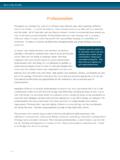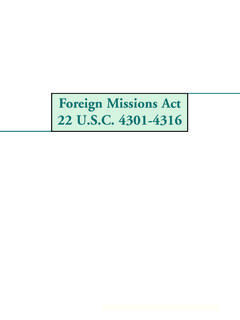Transcription of LOS ANGELES UNIFIED SCHOOL DISTRICT Crisis Counseling ...
1 Draft LOS ANGELES UNIFIED SCHOOL DISTRICT . Crisis Counseling & Intervention Services Secret Service Guidelines for Threat Assessment & Management Background: After the tragic SCHOOL shooting at Columbine High SCHOOL , the US Department of Education and the US Secret Service embarked on a study of 37 SCHOOL shooters. Their recommendations for assessing threats to students or staff at a SCHOOL are summarized below. Definition: Threat assessment is a tool for responding to threatening situations in which a particular student threatens another student(s) and/or staff. The primary purpose of a threat assessment inquiry is to determine whether a particular student poses a threat of targeted SCHOOL violence.
2 1 Threat assessment inquiries are initiated, conducted, and controlled by the SCHOOL or DISTRICT threat assessment team. Based on its initial assessment, the threat assessment team (principal, SCHOOL police officer and SCHOOL mental health professional) may decide that a threatening situation warrants a threat assessment investigation by a local law enforcement agency. This determination should be made on a case-by-case basis. Team Leader/Point of Contact: The threat assessment team should designate a leader to serve as the initial point of contact. The team leader will screen the available information and determine whether to initiate a threat assessment inquiry or to consult with other members of the threat assessment inquiry or to consult with other members of the team.
3 Information needed to begin the threat assessment process: (pages 48-51). 1. The facts that drew attention to the student 4. Motives 2. Information about the student 5. Target Selection 3. Information about attack-related behaviors A direct threat is one in which the plan, target, time frame and method of carrying out the threat is detailed. Evaluating the information for the threat assessement: (pages 55-57). 11 Key Questions guide the evaluation of information gathered by the team from research and interviews during the threat assessment process 1. What are the student's motive(s) and goals? 2. Have there been any communications suggesting ideas or intent to attack?
4 3. Has the subject shown inappropriate interest in any of the following: SCHOOL attacks or attackers Weapons including recent acquisitions Incidents of mass violence such as terrorism, work place violence, mass murderers 4. Has the student engaged in attack-related behaviors? 5. Does the student have the capacity to carry out an act of targeted violence? 6. Is the student experiencing hopelessness, desperation and/or despair? 7. Does the student have a trusting relationship with at least one responsible adult? 8. Does the student see violence as an acceptable or desirable or the only way to solve problems? 9. Is the student's conversation and story consistent with his or her actions?
5 10. Are other people concerned about the student's potential for violence? 11. What circumstances might affect the likelihood of an attack? Reviewing the information to determine an appropriate intervention plan for the student and the SCHOOL : If there is enough reliable information and the information is convincing that the student does not pose a threat, then the team should conclude the inquiry, provide support for the student(s), and document the actions taken (include sources, content of information considered, dates information was acquired, and basis/reasoning for findings). If the team determines that there is insufficient information to be reasonably certain that the student does not pose a threat; or the student appears to have a plan of attack; then the matter should be referred to the appropriate law enforcement agency for a threat investigation.
6 Instead of basing judgements of risk on student traits or whether that student made specific threatening statements, the threat as- sessment process focuses upon evaluating that student's behaviors and communications and determining whether those behaviors and communications suggest that the student has the intent and capacity to carry out a SCHOOL attack. 1. 1. United States Secret Service & Department of Education, Threat Assessment in Schools: A Guide To Managing Threatening Situa- tions and To Creating Safe SCHOOL Climates, Washington May 2002.





